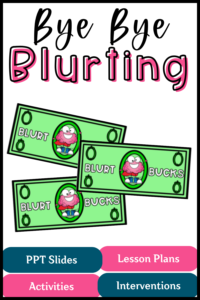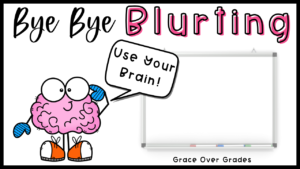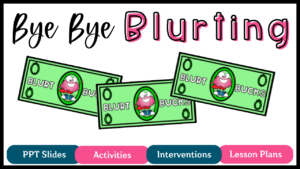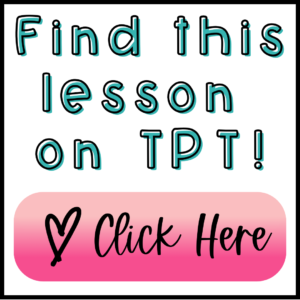What is Blurting?
If you’ve been an elementary teacher for more than 45 seconds, you’ve probably already experienced blurting. I’m sure every elementary teacher has Googled, “How to get students to stop talking out” at least once in their career!
If that’s you, read on for a plan of action and a FREE DOWNLOAD!
Blurting is when someone speaks impulsively without giving thought to if the timing is appropriate. It’s important to have focused behavior interventions around blurting before it throws your classroom management entirely out of whack!
In the classroom, you might see this kind of behavior at various times of the day. For example, it might happen during a whole group lesson like a read aloud. It can also happen during a structured small group time or even on the playground between friends.
Why is blurting a problem?
Blurting can create multiple issues in your classroom. The first concern is classroom management. When one student blurts during your lesson, it can start a much bigger problem. Other students think it’s an acceptable behavior and they begin talking out also. Before you know it, the situation has snowballed and you no longer have a calm learning environment, but instead a chaotic space that makes focusing difficult.
Blurting during small group time can cause other concerns. The first is distraction and frustration for other students. Also, when children blurt thoughts impulsively during peer to peer conversations, feelings can often get hurt. Just think, how many times have you heard comments yelled out like, “This is easy.” or “I don’t want to work with you!”?
Why does blurting happen?
Blurting happens most often in elementary classrooms. Kids at this age are still learning many important life skills: impulse control, problem solving and social awareness.
Because kids at this age are still developing impulse control skills, they will often yell out due to big emotions like frustration or confusion. Without developed problem-solving skills, you might find that students yell out when they need something like a new pencil or a tissue.
Finally, students at this age are still developing social awareness skills. You might notice some students blurting their INSIDE thoughts before realizing they might be hurtful to the other person.
How to get students to stop talking out in your classroom
If you want to decrease the amount of blurting in your classroom, you need to start by giving your students the facts. It’s not enough to just TELL them to stop talking out. Instead, they need a plan! They need a clear understanding of what it means to blurt, why it’s a problem, and strategies to stop them from blurting – replacement behaviors.
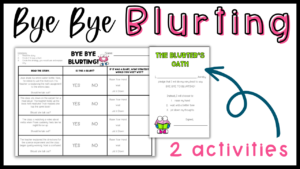
What this lesson, Bye Bye Blurting, includes:
- – full lesson plan that includes all of the parts mentioned above
- – interactive slides that go along with the lesson plans
- – A follow up assessment to ensure student understanding
- – Blurter’s Oath page for each student in the class to sign
- – Four behavior interventions for blurting that can be used with individual students or with a whole group.
Here are the Downloadable Files for the Bye Bye Blurting Activity:
Bye Bye Blurting – Lesson Plan (Members Only)
Bye Bye Blurting – Lesson Slides (Members Only)
Bye Bye Blurting – Blurter’s Oath (PPT or Google Slides)
Bye Bye Blurting – Summative Assessment (Members Only)
Looking for a deal? Did you know you can get access to this along with EVERY other resources Grace Over Grades have ever made? Join our Membership to enjoy UNLIMITED downloads!
If you found this post helpful, you might also like to read about using CALM DOWN CORNERS or MINDSET QUOTES AT MORNING MEETING.
Don’t forget to Pin so others can enjoy!
